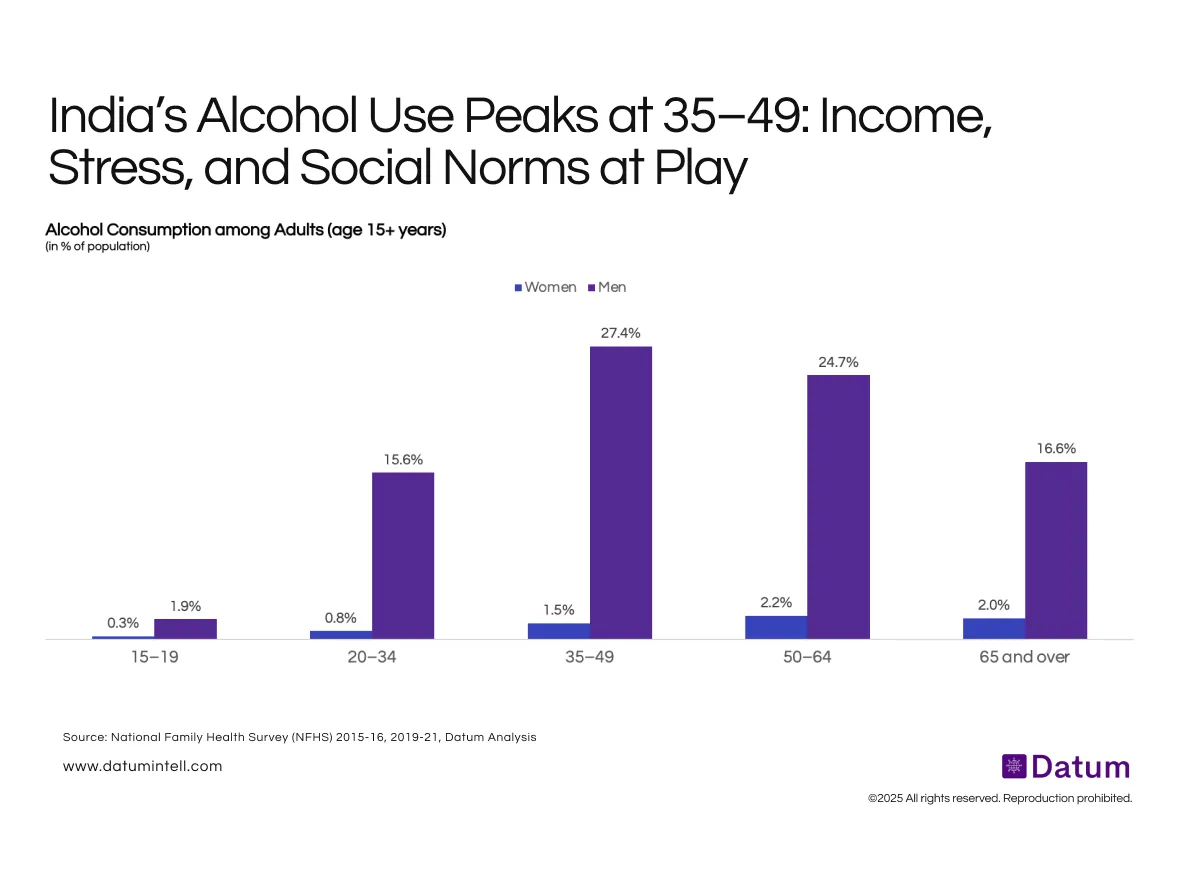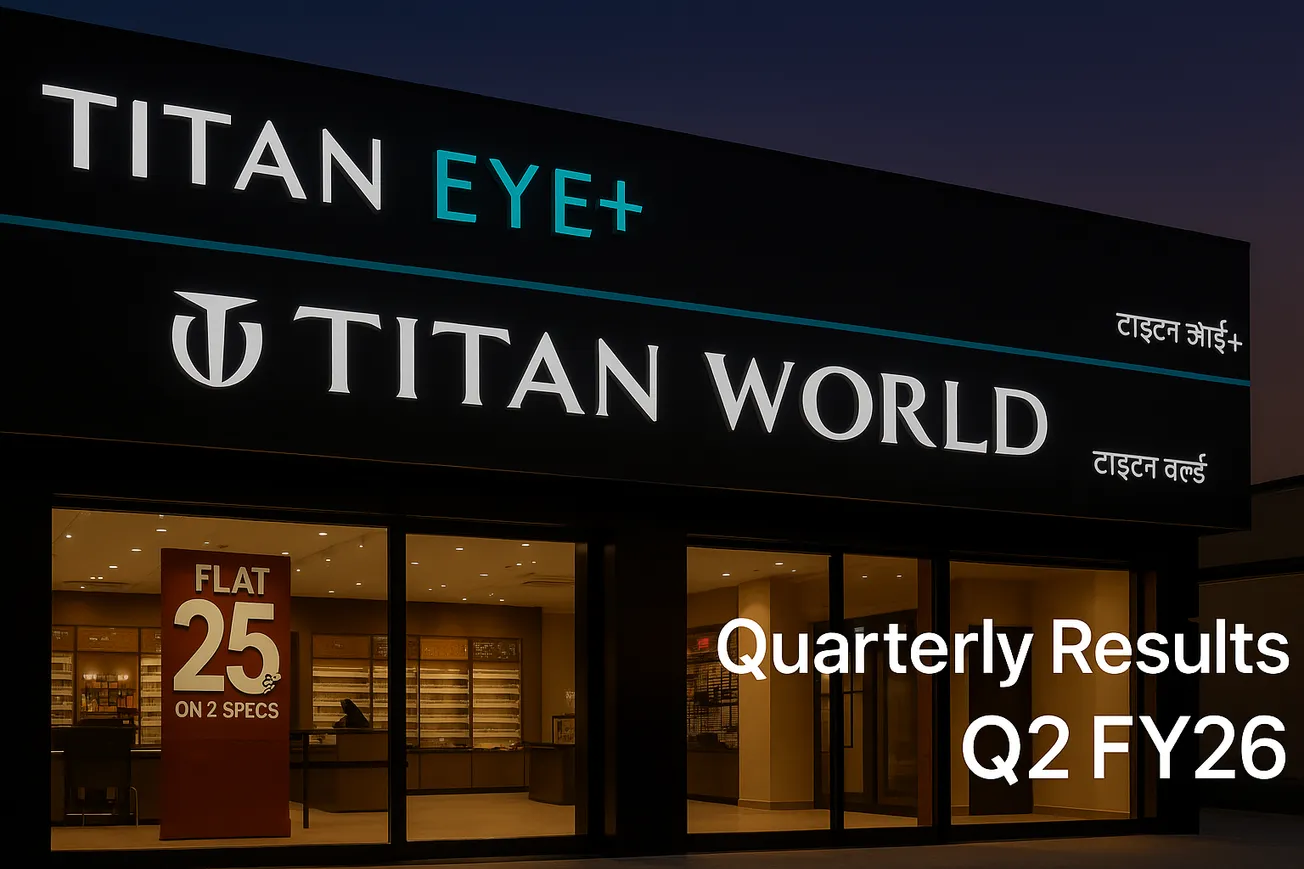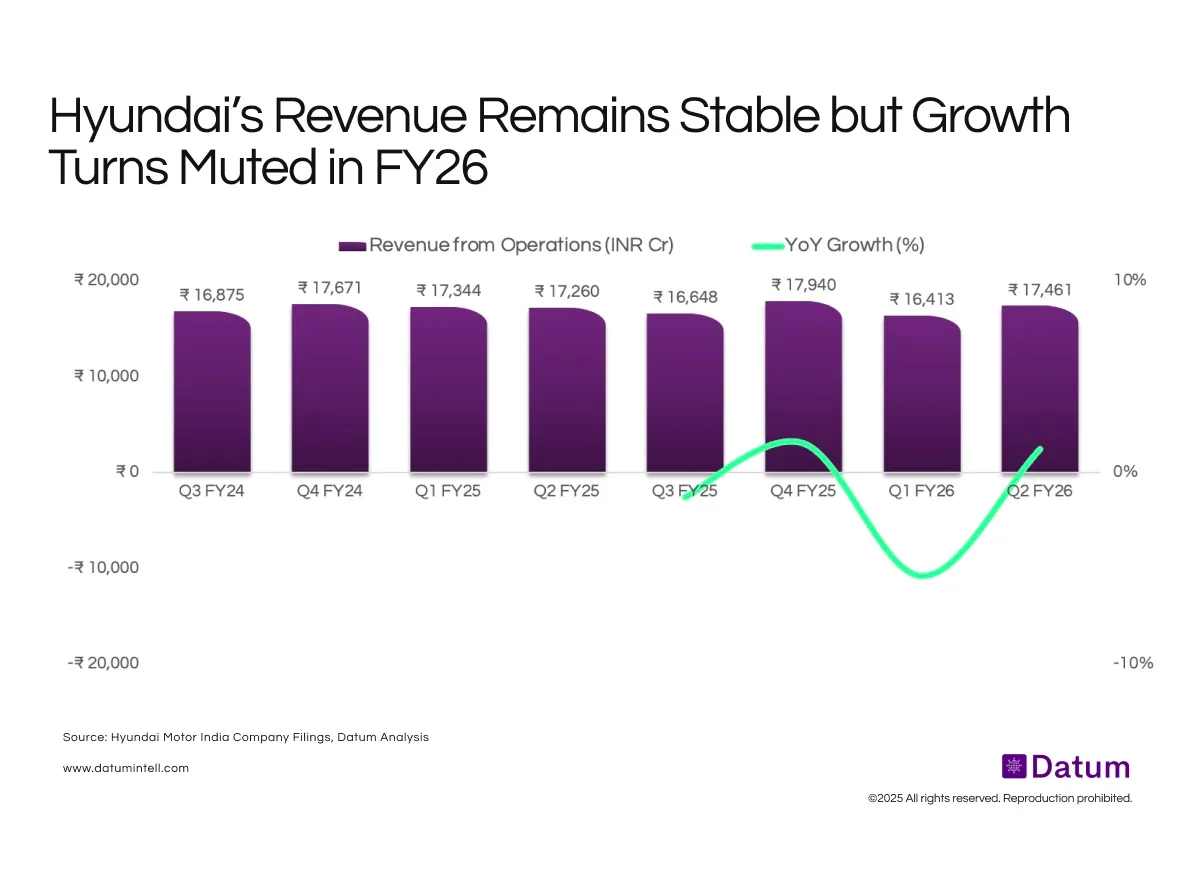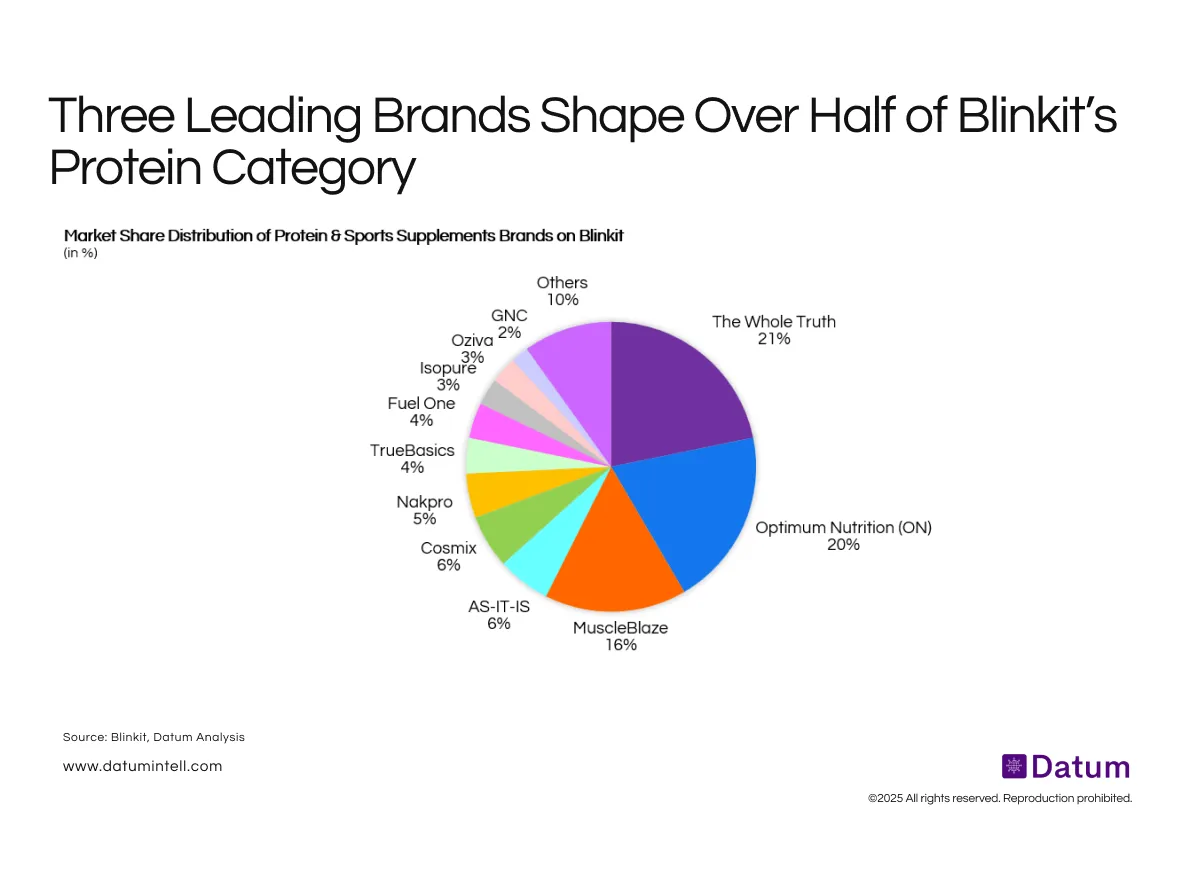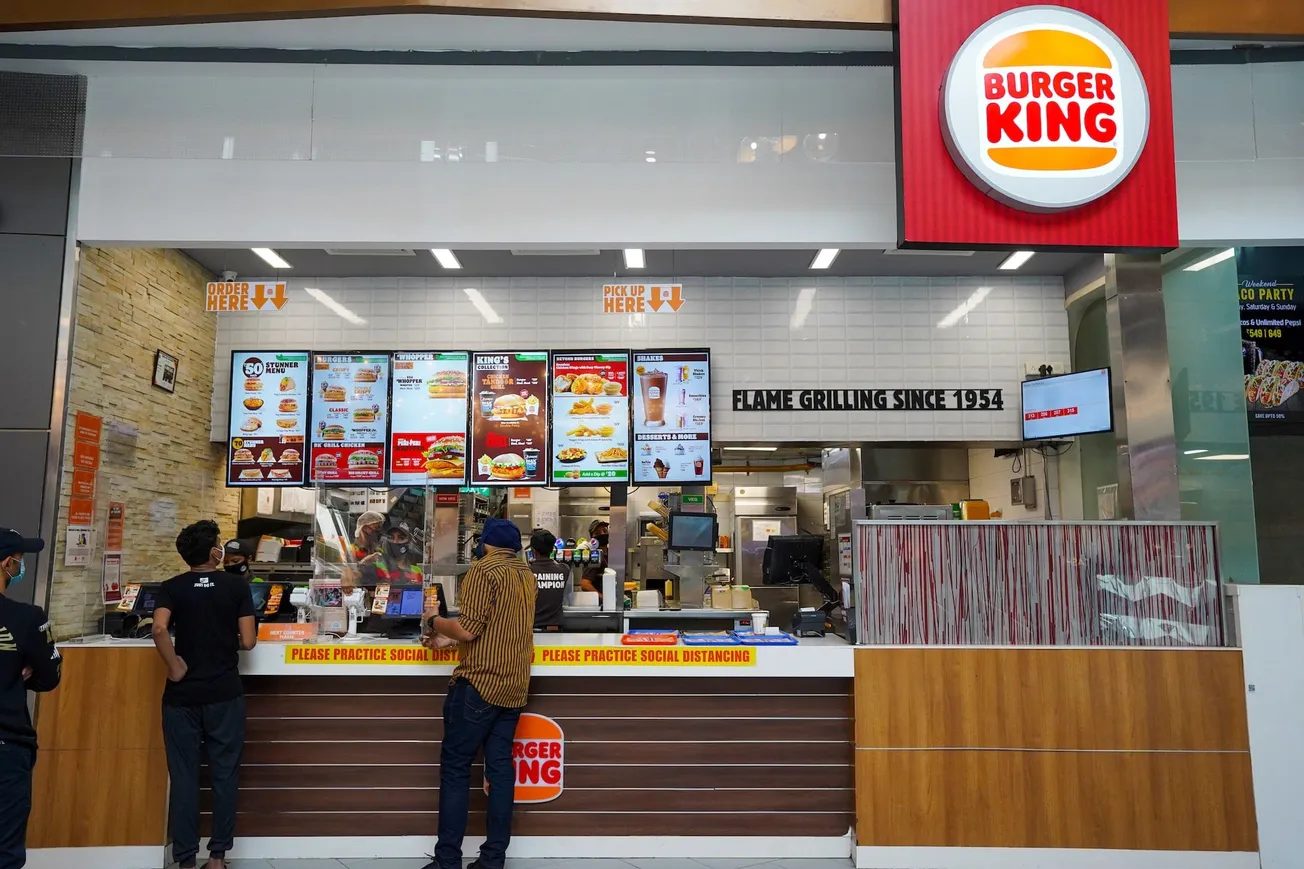Table of Contents
Data from the National Family Health Survey (NFHS 2019–21) shows that alcohol use among Indian adults is most prevalent between the ages of 35 and 49, where 27.4% of men and 1.5% of women report consumption. Usage declines moderately after age 50 but remains significant among older men (16.6% among 65+ years).
In contrast, women’s participation in alcohol consumption remains consistently below 2.5% across all age brackets — a reflection of deep-rooted cultural norms and social deterrents that limit female drinking visibility despite changing urban lifestyles.
- Alcohol use rises sharply with age until midlife, then stabilizes
- Consumption increases from ~2 % among teens (15–19) to nearly 25–27 % among adults aged 35–64, before tapering slightly among seniors (65+).
- Pattern reflects a lifecycle effect - initiation in early adulthood, peak in middle age, and decline due to health or abstinence in later years.
- Midlife cohort (35–64) contributes over half of total drinkers, despite representing only one-third of the population.
- Men dominate consumption across all age groups; gap widens with age
- In ages 20–34, male drinking prevalence (15.6 %) exceeds female (0.8 %) by nearly 20x; gap broadens to >25x in older cohorts.
- Young adults show limited adoption, hinting at attitudinal moderation
- Only 1–2 % of total drinkers are under 20, despite higher exposure to nightlife and digital influence.
- Suggests rising health consciousness, social surveillance, and changing peer norms among Gen Z.
- Peak consumption age group (35–49) is critical for revenue and regulation
- Nearly 27 % of men and 1.5 % of women in this group consume alcohol - representing India’s core drinking segment.
- High income stability and discretionary spend drive premiumization potential in this cohort.
- The senior segment remains small but consistent
- Among those 65+, consumption holds at ~16–17 % for men, showing habitual continuation among older users.
- Indicates a stable base of legacy consumers, less responsive to digital influence but loyal to traditional categories (IMFL, country liquor).
What It Means
- Peak consumption in midlife aligns with higher disposable income, work-related stress, and greater social acceptance of drinking among men.
- The drop after 50 likely reflects health concerns, reduced social exposure, and lower peer influence.
- Persistently low female participation underscores India’s gendered drinking culture — where alcohol remains largely normalized for men but stigmatized for women.
- The generational gap also highlights an emerging urban youth cohort (20–34) with growing exposure yet still conservative consumption levels.

